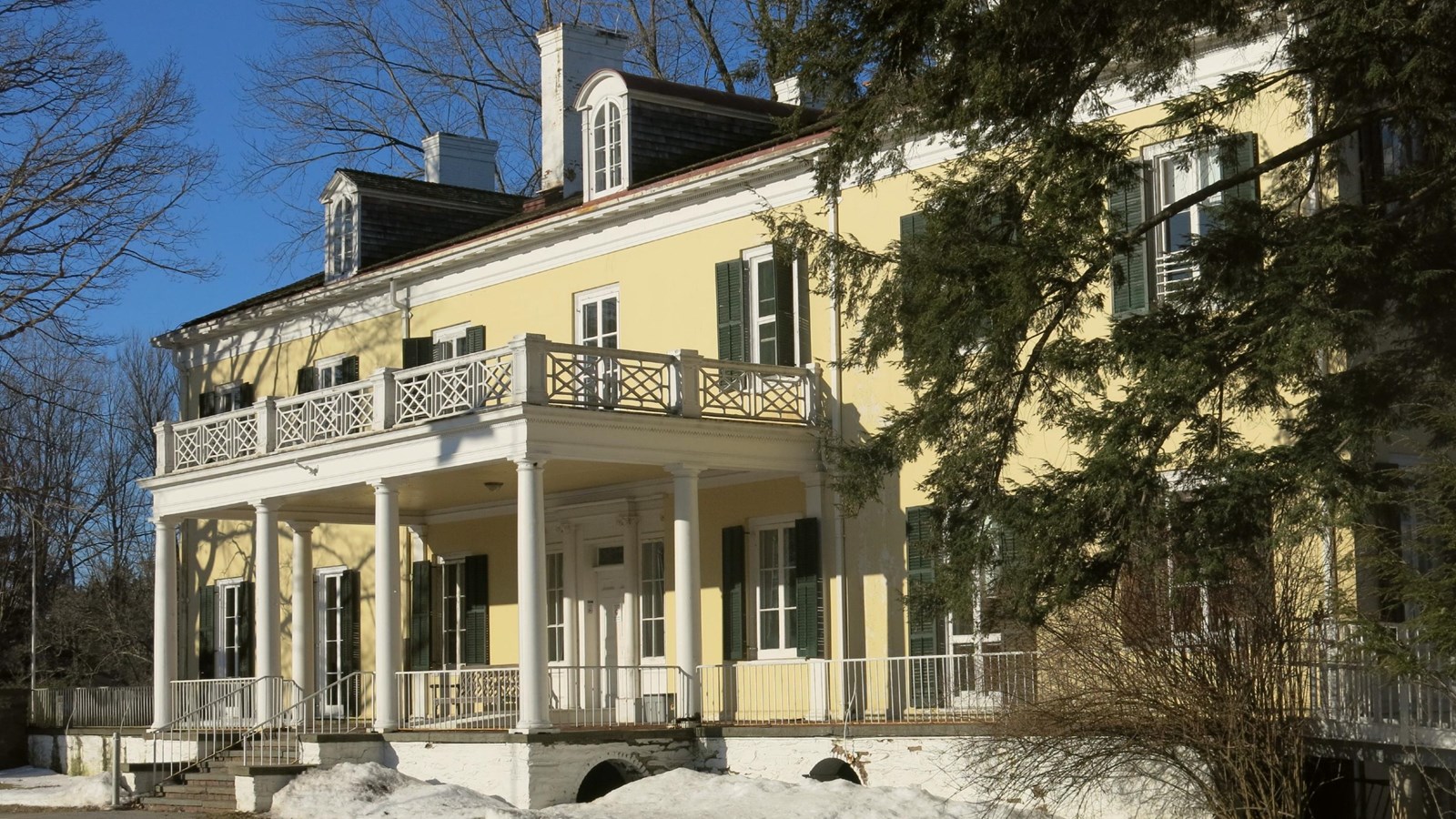Last updated: March 9, 2023
Place
Bellefield

NPS Photo
Formerly the country place of the Newbold-Morgan family, Bellefield embodies the distinctive characteristics of Colonial Revival country-house architecture in the Hudson Valley dating to a renovation and expansion designed by McKim, Mead & White from 1909-1911. The house reflects changes in architectural styles and building methods dating back to its initial construction in 1795.
The River Families of the Hudson Valley
In the eighteenth century, New Yorkers acquired large parcels of property along the Hudson, prized for the rich agricultural soils and ready access to the river. Early land owners and New York City merchants accumulated great wealth selling or leasing the land to families who established modest farms. By the time of the Civil War, wealthy residents of New York City were converting the old riverfront farms to elegant seasonal residences. Drawn by the natural beauty of the region, they transformed these working farms into country estates that featured grand houses, pleasure grounds, formal gardens, and model farms.
The river families typically used their Hudson Valley homes in spring and fall, favoring other seaside settings, such as Newport and Bar Harbor during the summer. While here, they engaged in a range of leisurely pursuits including carriage drives, horseback riding, lawn tennis, swimming and boating. River society was composed of discreet and inconspicuous families like the Astors, Livingstons and Roosevelts whose genteel way of life was distinguished from the “new money” opulence of their wealthy industrialist neighbors during the Gilded Age.
The Newbolds of Bellefield
New York State Senator Thomas Newbold and his wife Sarah Coolidge purchased Bellefield in 1885. Newbold was a man of local prominence serving as State Senator for the Hyde Park district and later as head of the State Health Department. Sarah was from a cultivated Boston family and a direct descendant of President Thomas Jefferson. Their children, Mary, Jefferson and Julia, were playmates of Franklin Roosevelt, riding bicycles and horses freely among the private roads connecting the river estates.
Constructed in 1795, the house was perceived locally to have historic significance as one of the oldest colonial houses along the Hudson River. Bellefield was remodeled between 1909 and 1911 by prominent architects McKim, Mead & White, enlarging the house from 16 to 29 rooms. The new facade in the restrained, neoclassical style was typical of country place architecture at the turn of the century.
McKim, Mead & White transformed the original two-story three-bay house by adding two symmetrical two-bay wings to either side and tying the entire front facade together by the addition of a raised brick and stone terrace with a one-story Doric portico sheltering the center entrance. The gable roof features pedimented dormer windows and prominent chimney stacks, the eaves are detailed with mutules and guttae (recalling the style of the original Federal house), and the walls are simply treated in stucco, with long shuttered casement windows as the primary design elements. A large stair hall lit by a Palladian window was incorporated into the north wing. The rear of the house features flush board siding, quoins, and tall six-over-six double-hung sash windows that may have been remnants of the original house. Eaves that continued the same classical detailing found on the front tied the facade together with the rest of the house. The renovations also left intact a mid-nineteenth-century wrought-iron veranda at the rear. The McKim, Mead & White design of the interior featured restrained neoclassical paneling and mantelpieces in the living room, entrance hall, and stair hall, while leaving intact most of the earlier rooms.
The Walled Garden at Bellefield
In 1912, Newbold asked his cousin Beatrix Jones to design a new garden. Marrying later that year, Beatrix Farrand would soon become one of the leading landscape architects of her time. During her prolific career, Farrand created gardens for many influential individuals, public institutions and universities and was selected a founding member—the only woman—of the Association of American Landscape Architects in 1899. Few of her gardens remain, but notable exceptions include the Rockefeller’s Eyrie Garden, large portions of the Princeton and Yale campuses, and Dumbarton Oaks, indisputably one of the great gardens of the world. The garden at Bellefield is thought to be her earliest extant residential design. Created nearly two decades into her professional career, it is a fully mature work consistent in complexity and depth with her most famous projects.
